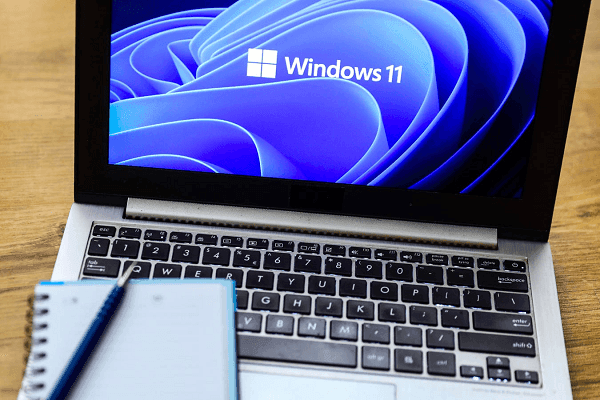Why Your Windows 11 Not Booting Up
Windows 11, the latest operating system from Microsoft, is packed with features and improvements. However, users may encounter the frustrating issue of Windows 11 not booting up. This article aims to shed light on the possible reasons behind this problem and provide actionable solutions.
Common Causes of Windows 11 Boot Failure
- Corrupted System Files: Over time, system files can become corrupted, leading to booting issues.
- Driver Compatibility Problems: Incompatible or outdated drivers can interfere with the boot process.
- Hardware Issues: Faulty hardware components such as RAM or hard drive can prevent Windows 11 from booting.
- Malware and Viruses: Security threats can damage crucial system files, causing boot failures.
- Windows Update Glitches: Failed or interrupted updates may result in booting problems.
How to Fix Windows 11 Won’t Boot Problem
By following these steps, you can diagnose and address the issues preventing Windows 11 from booting up. I
1. Use Safe Mode to Diagnose:
Boot your computer in Safe Mode to determine if third-party applications are causing the boot issue. Follow these steps:
- Restart your computer.
- As Windows begins to load, press the "Shift" key and hold it.
- Click on "Restart" while holding the "Shift" key.
- In the boot options menu, select "Troubleshoot" > "Advanced options" > "Startup Settings."
- Press the "4" key or "F4" to start in Safe Mode.
2. Repair Corrupted System Files:
Windows has a built-in tool called System File Checker (SFC) that can scan and repair corrupted system files. Here's how to use it:
- Open the Command Prompt with administrative privileges.
- Type
sfc /scannowand press Enter. - Allow the scan to complete, and follow any on-screen instructions to fix detected issues.
3. Update or Rollback Drivers:
Outdated or incompatible drivers can cause boot problems. Follow these steps to update or rollback drivers:
- Right-click on the Start button and select "Device Manager."
- Locate the problematic driver (usually marked with a yellow triangle).
- Right-click on the driver and choose "Update driver" or "Roll Back Driver" as needed.
4. Check for Hardware Problems:
Ensure that your hardware components are functioning properly. Follow these steps:
- Run built-in hardware diagnostics or use third-party tools to identify faulty components.
- Replace any malfunctioning hardware, such as RAM or a failing hard drive.
5. Scan for Malware and Viruses:
Malicious software can corrupt system files and hinder the boot process. Perform a thorough antivirus scan:
- Use a reputable antivirus program to scan your system for malware and viruses.
- Remove any detected threats and restart your computer.
6. Use Windows Recovery Options:
Accessing Windows Recovery Environment (WinRE) can help repair the startup and restore system files. Follow these steps:
- Boot from a Windows installation media or recovery drive.
- Select your language and other preferences, and click "Next."
- Choose "Repair your computer" > "Troubleshoot" > "Advanced options" > "Startup Repair."
Create Windows 11 System Backup using AOMEI Cyber Backup
Preventing future boot failures is crucial. AOMEI Cyber Backup offers a reliable solution to create a system backup. It offers a range of advanced features and flexible options to meet the diverse needs of businesses. With support for system backup, file backup, disk backup, and more, AOMEI Cyber Backup provides a reliable and efficient solution for virtual machine data protection.
Steps to Create Windows 11 System Backup:
- Visit the official AOMEI website, download the software, and follow the installation instructions.
- Open the application and navigate to the "Backup Task" tab.
- Choose "System Backup" to ensure the entire Windows 11 system is included in the backup.
- Select a destination to store the backup files.
- Set up a regular backup schedule for automatic system backups.
- Click on "Start Backup" to initiate the backup process. AOMEI Cyber Backup will create a complete system image.
Step to Restore Windows 11 with AOMEI Cyber Backup
- Switch to the "Restore" tab in the main interface.
- Choosing the backup image to restore from: Select the backup image file that contains the desired server backup.
- Selecting the destination for the restore: Choose the target location where you want to restore the backup. Ensure it is a valid and accessible destination.
- Initiating the restore process and monitoring the progress. Then review the restore settings and click on the "Start Restore" button to begin the restore process.
Conclusion
Windows 11 not booting up can be a frustrating experience, but with the right troubleshooting steps and preventive measures, users can overcome this issue. By following the outlined solutions and creating a system backup using AOMEI Cyber Backup, you can ensure the stability and reliability of your Windows 11 operating system. Stay proactive in maintaining your system to enjoy a seamless computing experience.




